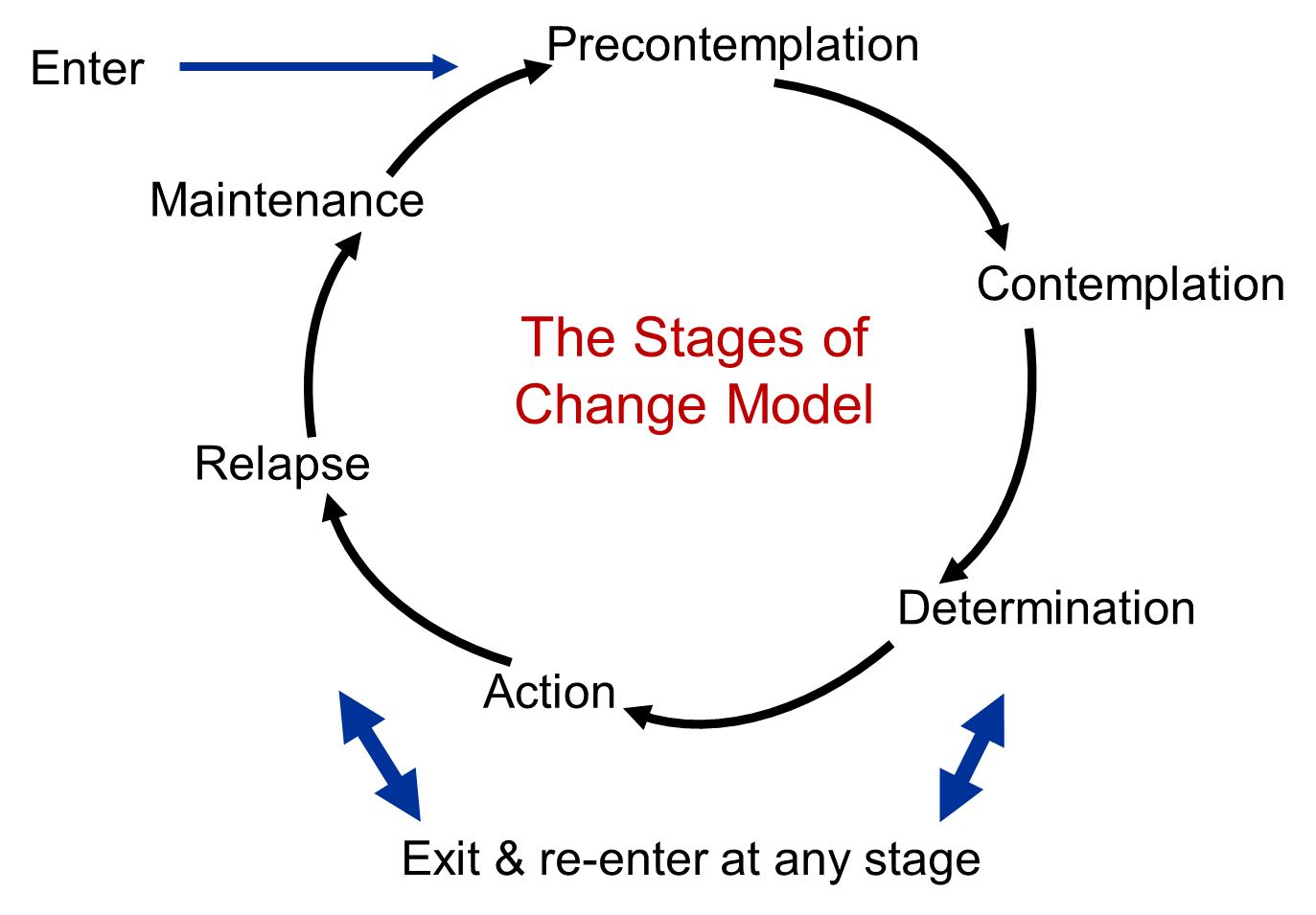This month, we’re unpacking what makes the Diversity and Inclusion journey painful. There are lots of reasons to disengage with the journey because it is (either perceived as or actually is) quite difficult. Today I want to look at the complexity of behaviour change. This, I would agree, is a real challenge. So how can we make it easier?
To simplify the process of becoming more inclusive, we have broken down Inclusion into 8 Inclusive Behaviours. This allows us to practice getting better at individual behaviours. As we gradually improve at each, we grow more and more inclusive and more and more appreciative of diversity.
But as we all know, changing our behaviour is hard work. How can we make it easier for ourselves?
The six stages of change
In order to explain how we can make the process of change easier, I want to introduce you to the Transtheoretical Model (aka the Stages of Change Model), developed by Prochaska and DiClemente in the late 1970s. The six stages are set out in the picture below, featured in this article, where you can learn more about TTM.

I want to focus on the Action (Stage Four) and Relapse (Stage Five).
In the Stage of Action, people have recently started changing their behaviours and intend to keep going. This is the stage where many of clients find themselves. They understand the need for change and want to embrace it. They even begin to take Action by noticing their own and other people’s biases, catching themselves and others in making assumptions and rash judgments, and realising that they may have used inappropriate language.
While determined to progress, Stage Five – Relapse – often thwarts efforts to maintain these new habits. This is when motivation wanes, opportunities to practice become difficult to find and time/work pressure makes it less engaging to stay the course of Action.
Behaviour Change as an Experiment
One way to minimise the potential for Relapse is to create a team environment that encourages experimentation. In this kind of environment, people feel free to try new things, ask questions if they’re unsure and make mistakes without worrying about unintentionally offending someone or being offended. This kind of environment is more conducive to learning and is more resistant to Relapse.
Setting Ground Rules
In order to feel ‘safe’ to experiment, it is advisable to set some Ground Rules. The aim for these rules is to allow people to experiment, make mistakes and nudge each other towards learning – without serious repercussions. It is also important to set boundaries, given that some people might view these relaxed societal norms as an invitation to cause discourse and intentional affront. Boundaries help safeguard psychological safety, like ensuring that one person’s freedom does not impose on that of another.
The Ground Rules should address concepts like what information ‘stays in the room’, how to keep an open mind rather than jump to conclusions, how to give people the benefit of the doubt, how to accept that we sometimes don’t know what the right thing is to say or do and how to maintain a level of curiosity for people’s perspectives.
Although setting Ground Rules appears like a complicated process, a session of creative thinking with the team can yield a set of reasonable standards to which most people (preferably everyone) can agree.
So, while behaviour change isn’t easy, we can make it much more achievable than it may currently appear.
To facilitate this state of experimentation, we are launching our D&I Confessions series. In this column, we will share real examples of common missteps and mistakes that many of us make while practicing our Inclusive Behaviours. Want to contribute (anonymously)? Email us!


